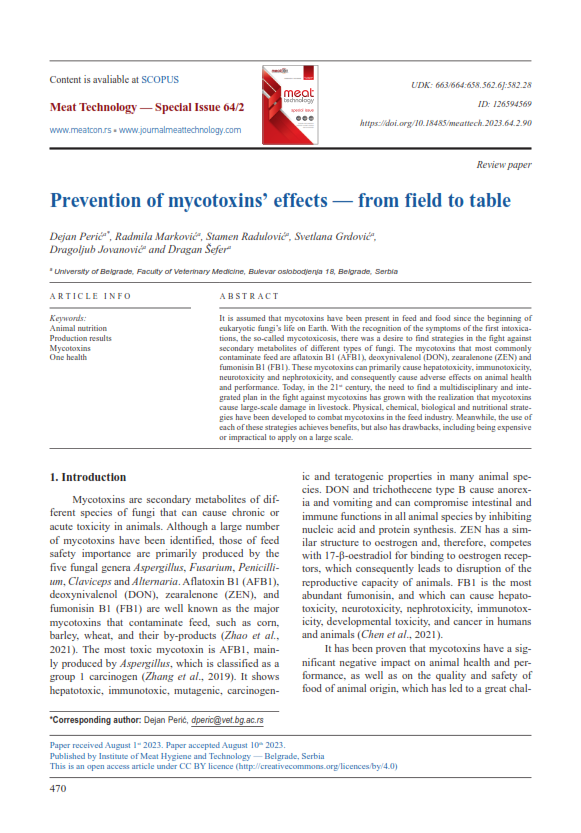Prevention of mycotoxins’ effects - from field to table
Abstract
It is assumed that mycotoxins have been present in feed and food since the beginning of eukaryotic fungi’s life on Earth. With the recognition of the symptoms of the first intoxications, the so-called mycotoxicosis, there was a desire to find strategies in the fight against secondary metabolites of different types of fungi. The mycotoxins that most commonly contaminate feed are aflatoxin B1 (AFB1), deoxynivalenol (DON), zearalenone (ZEN) and fumonisin B1 (FB1). These mycotoxins can primarily cause hepatotoxicity, immunotoxicity, neurotoxicity and nephrotoxicity, and consequently cause adverse effects on animal health and performance. Today, in the 21st century, the need to find a multidisciplinary and integrated plan in the fight against mycotoxins has grown with the realization that mycotoxins cause large-scale damage in livestock. Physical, chemical, biological and nutritional strategies have been developed to combat mycotoxins in the feed industry. Meanwhile, the use of each of these strategies achieves benefits, but also has drawbacks, including being expensive or impractical to apply on a large scale.





